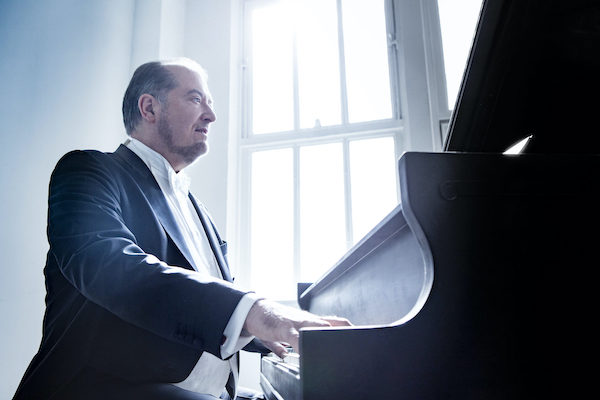Ohlsson explores a world of drama and nuance in Chopin

During his 50-plus years on the concert stage, Garrick Ohlsson has covered a wealth of musical territory—from Beethoven and Brahms to Griffes, Granados and much more.
On Friday, though, the veteran pianist went back to his roots, so to speak. He devoted his entire recital for Houston’s DACAMERA to the composer whose music launched his international career: Frédéric Chopin.
When Ohlsson won the Chopin Competition in Warsaw in 1970, his red-blooded tone and vigorous approach were his calling cards, and they sounded virtually undimmed Friday night. The most dramatic playing would have rung out commandingly in a much larger hall than the Wortham Theater Center’s 1,100-seat Cullen Theater.
The theater’s coziness paid dividends by letting the other end of Ohlsson’s sonic spectrum—his veiled, atmospheric pianissimos—take hold just as potently. Whether he savored a melody’s light and shade or drove home a dramatic outburst, Ohlsson seized on every work’s individual flavor.
The Nocturne in F major, Op. 15, no. 1, and the Nocturne in B major, Op. 9, no. 3, both feature long, richly embellished melodies that face sudden interruptions. Yet in the first, Ohlsson brought out the gleam and spaciousness of the tune and the rumbling force of the middle section. In the second, he played up the melody’s almost waltz-like lilt and the middle part’s drive and agitation.
It was much the same story with a group of etudes from Chopin’s Opus 10: Even though each one focuses on a single technical challenge, Ohlsson brought out the music’s impact as a compact tone poem rather than a mere finger exercise.
The Etude in F major, Op. 10, no. 8—which sends the right hand scurrying up and down the keyboard almost nonstop—began airily, then passed through moments of playfulness and turbulence. In the famous “Revolutionary” Etude, Op. 10, no. 12, Ohlsson created a mini-drama from the rise and fall of intensity: His left hand supplied the surging, churning undercurrent for his right hand’s bold, declamatory octaves.
With the two mazurkas that came later in the program—A minor, Op. 7, no. 2, and C-sharp minor, Op. 50, no. 3—Ohlsson heightened the contrast between pieces from different stages of Chopin’s life.
In the young Chopin’s A minor mazurka, with its relatively simple melody and accompaniment, Ohlsson began quietly, almost as if he were playing just for himself, then let the music reach out more brightly as a snappier theme appeared.
In the more richly textured C-sharp minor mazurka, from Chopin’s later years, Ohlsson sketched the opening’s lyrical cross-play in half-shades, then switched to big, vigorous strokes as the music grew dynamic and rebellious.
The program’s longer works built all these qualities into even more imposing form.
The Barcarolle in F-sharp major seemed epic. Ohlsson gave its opening a gentle swing that befits the barcarolle’s boat-song roots, and he filled the euphonious melody that follows—worthy of a bel canto opera duet—with sleekness and dulcet tone. But he built the climax into a resounding capstone, glorifying the simple melody that spawned it.
The Ballade in G minor can easily come off as a patchwork of contrasting episodes. But Ohlsson handled the ebb of flow of momentum so adroitly that the piece coalesced into a virtual sonata in one movement, by turns meditative, tempestuous and majestic.
The concert’s sole sonata—the Sonata in B minor—gained a near-symphonic scale.
The first movement embraced turbulence and punch as well as Ohlsson’s richest, silkiest lyrical playing of the night. Other hands have given the dashing scherzo more quicksilver precision, but Ohlsson made it red-blooded and exuberant.
In the Largo, Ohlsson spun out the main tune in clear, serene phrases, then made the sprawling middle section into eloquent play of shifting colors and ardent snippets of melody. The finale was a headlong burst of virtuosity.
Ohlsson simmered down the excitement and touched on one more genre with his sole encore: Chopin’s Waltz in C-sharp minor, Op. 64, no. 2. Much of it was cozy and intimate, but Ohlsson ended it with a touch of breeziness that helped usher the audience out into the night.
The Quartetto di Cremona and clarinetist David Shifrin will play works by Verdi, Weber and Mozart 7:30 p.m. Nov. 9 at Hobby Center for the Performing Arts. dacamera.com.